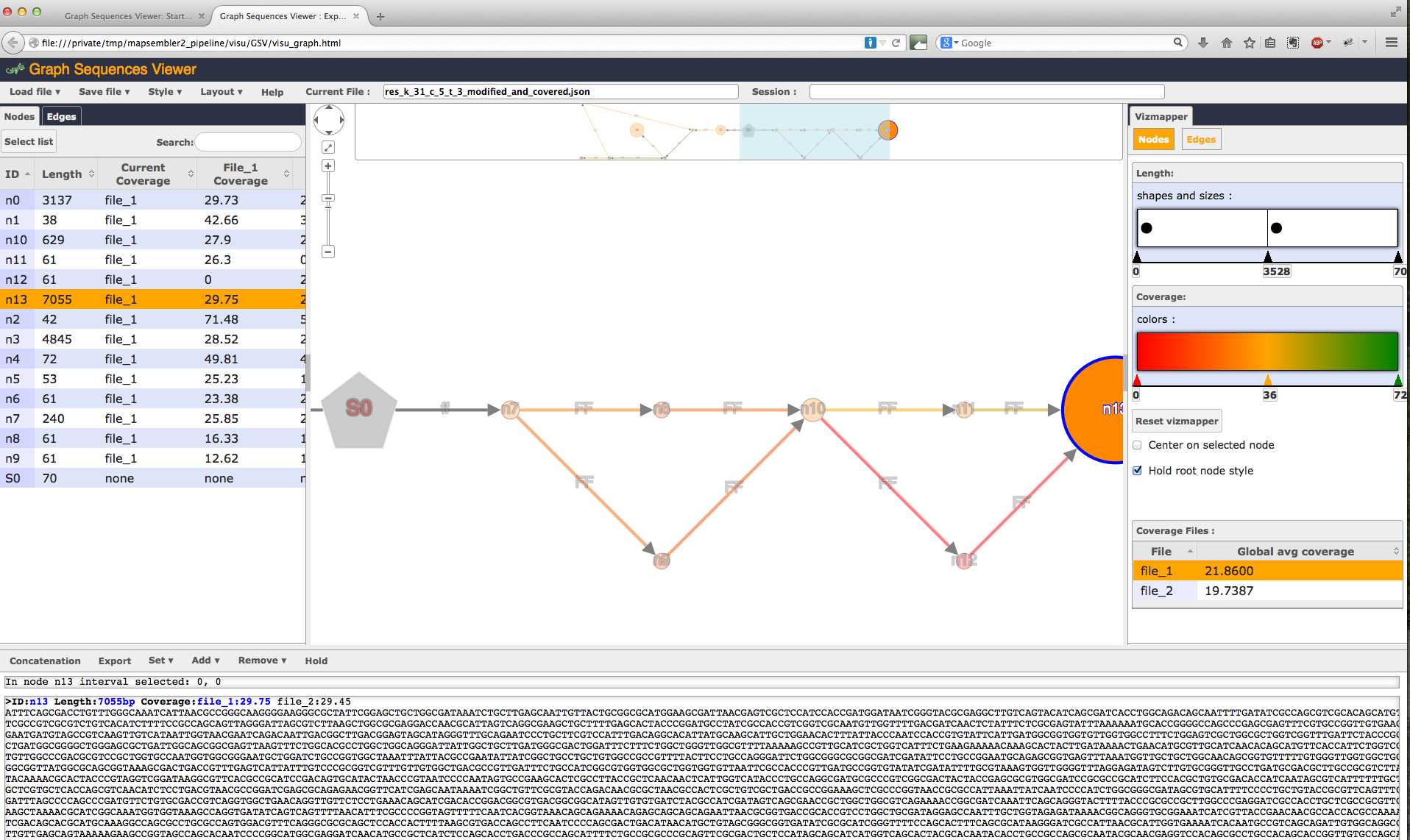Dear all,
I'm please to introduce the Mapsembler2 tool.
Mapsembler2 is a targeted assembly software. It takes as input any number of NGS raw read set(s) (fasta or fastq, gzipped or not) and a set of input sequences (starters). For each starter, Mapsembler2 outputs its sequence neighborhood as a linear sequence or as a graph, depending on the user choice.
Mapsembler2 may be used for (not limited to):
- Validate an assembled sequence (input as starter), e.g. from a de Bruijn graph assembly where read-coherence was not enforced. Checks if a known enzyme is present in a metagenomic NGS read set.
- Enrich unmappable reads by extending them, possibly making them mappable
- Check what happens at the extremities of a contig
- Check the presence / absence and quantify RNA seq splicing events. Check the presence/absence of SNPs or structural variants, ...
Based on the Minia data-structure it has a tiny memory footprint (human read sets can be analyzed with no more than 6GB memory) while being faster than other mentioned tools.
Finally we put effort to make it simple. The micro assembly step is in command-line fashion. We made it as simple as possible as shown in our dedicated video. Another video presents the graphical interface usage.
Home web page (download, GNU Affero General Public License, manual, galaxy install, videos) is here.
Any comment/feedback is warmly welcome.
Best,
Pierre



I couldn't find a git repository for mapsembler2. I had a minor pull request I wanted to submit (i.e. finish renaming
run_mapsembler_and_phaser.shtorun_mapsembler2_pipeline.shin the documentation and usage info). Thanks so much for developing mapsembler2!Hey, Thanks for your suggestion. I may do the modification. However, I'm afraid that mapsembler would deserve a much deeper code update and review. Many users complain that compilation fails, depending on their OS and GCC version.
Anyone interested in the maintenance and update of the code is warmly welcome to take the helm on the project.
Best, Pierre